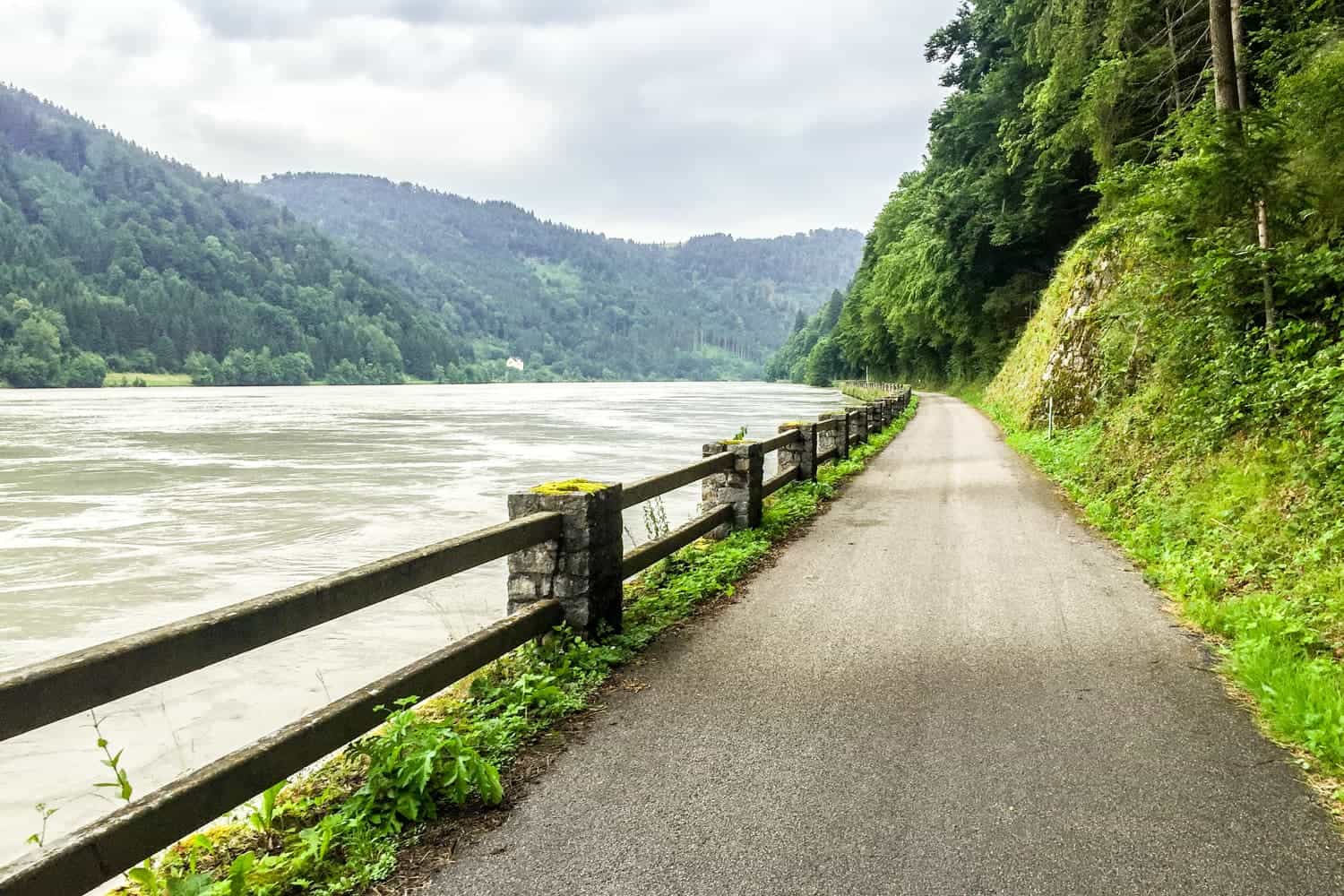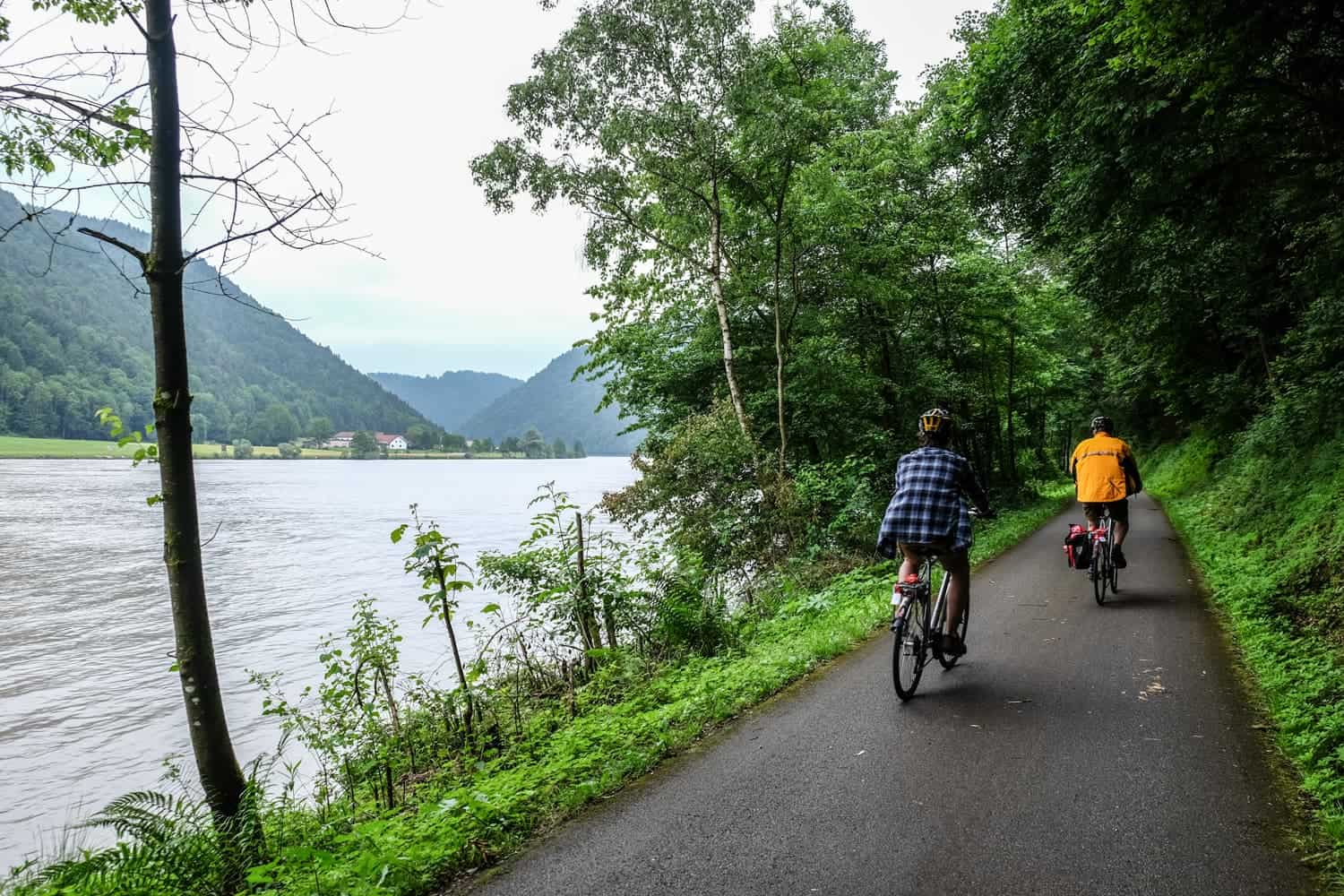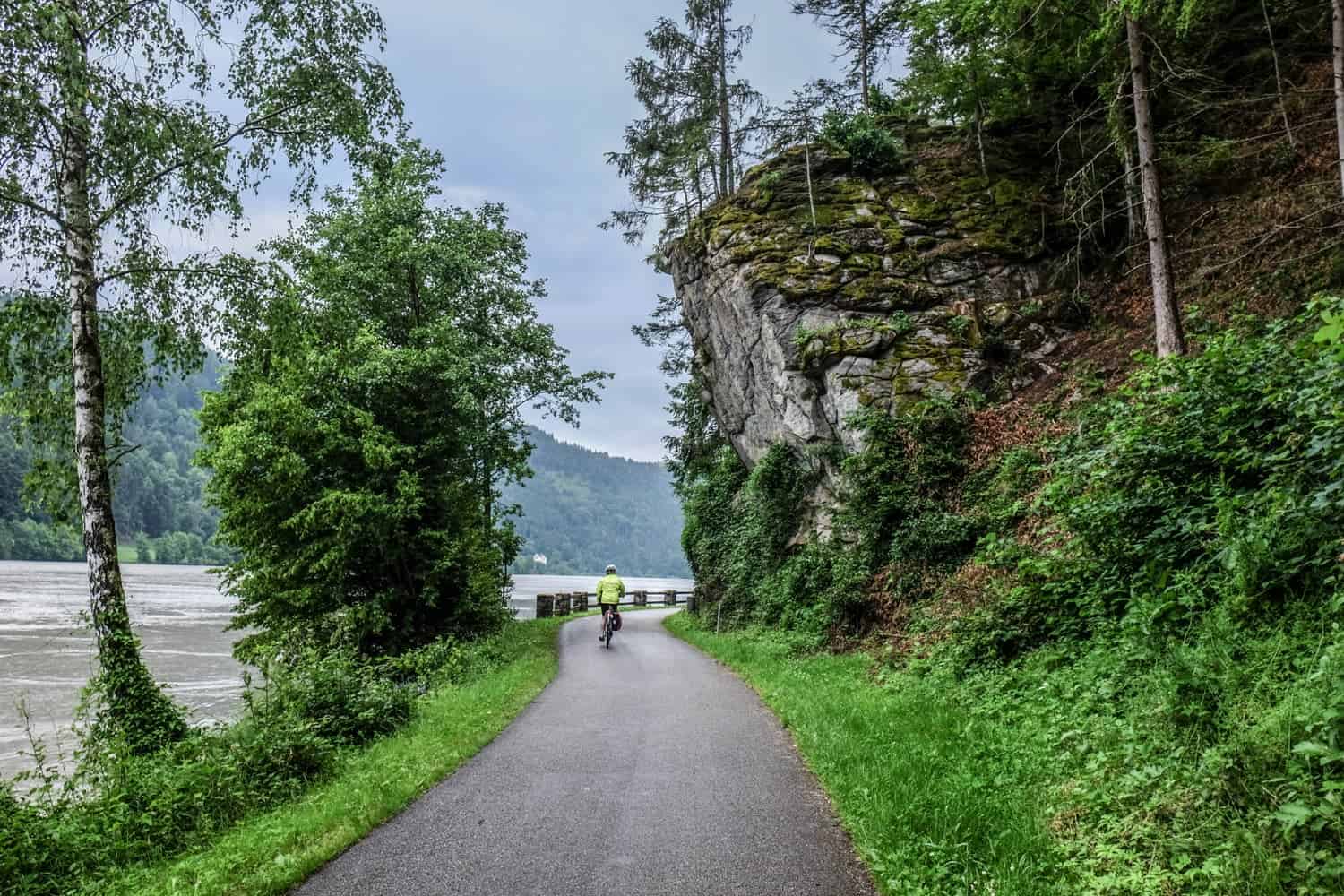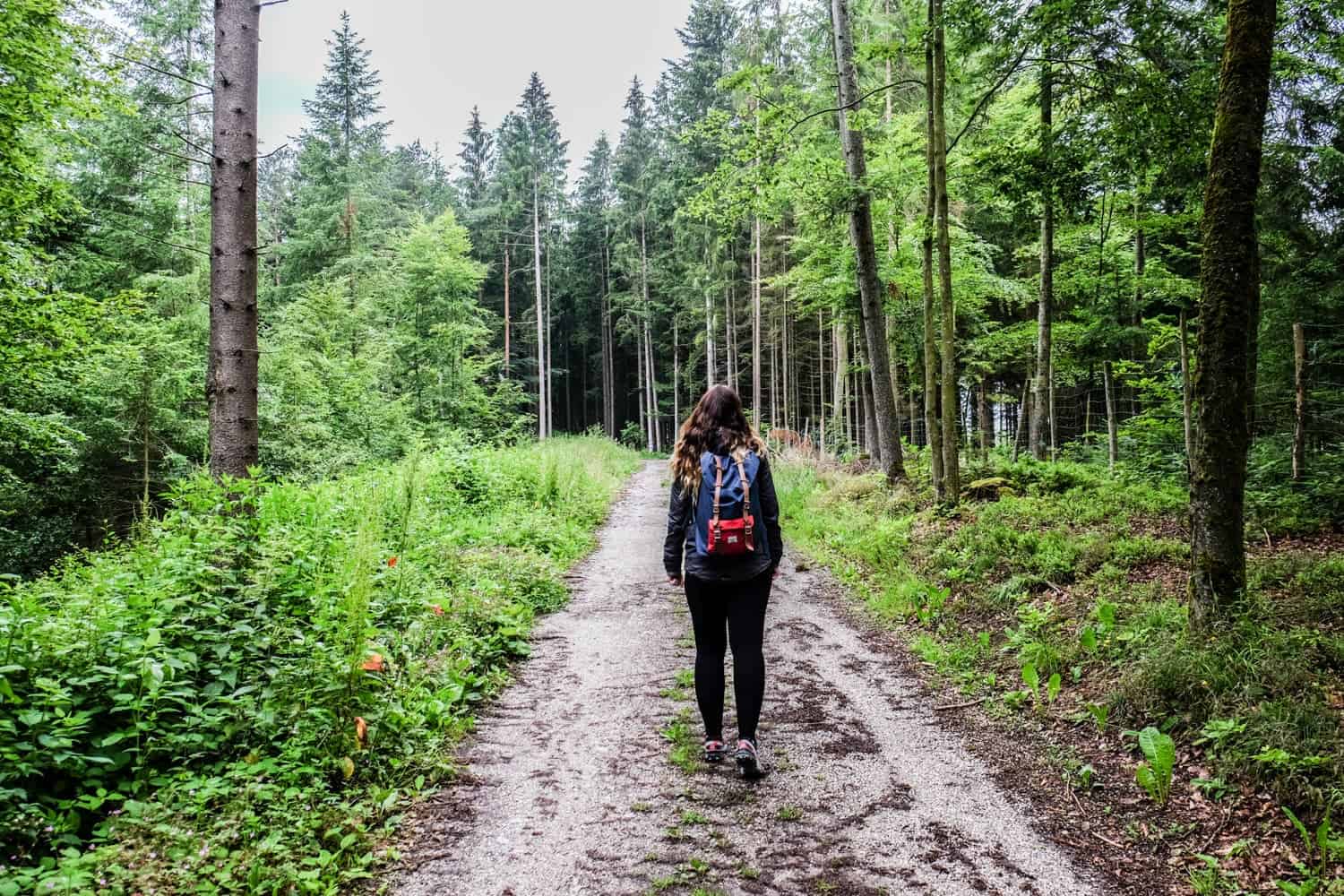Disclaimer: This post contains affiliate links to handpicked partners, including tours, gear and booking sites. If you click through or buy something via one of them, I may receive a small commission. This is at no extra cost to you and allows this site to keep running.
Biking the Danube Cycle Path in Austria is one of the country’s best outdoor adventures and on the section close to Linz, it provides the opportunity to view the famous Schlögener Schlinge loop of the Danube river.
The mighty European waterway of the Danube River weaves 410 kilometres through Austria on its 10-country course, changing direction twice and continuing east towards Bratislava. A lifeline of the country, the Danube carries you through varying regions, cultures and historical periods – a lifeline of the country whose entire length you can cover in parallel on two wheels.
The Danube Cycle Path is a 381 km journey from Passau in Germany to Bratislava in Slovakia, allowing you to follow part of the weaving route of Europe’s second-largest and second-longest river.
Contents
The Danube Cycle Path in Austria
A large segment of the Danube Cycle Path winds through Austria. Flowing through Lower and Upper Austria and connecting to the capital, part of it connects two of Austria’s main cities – Linz and Vienna – via the vineyard-strewn Wachau Valley.
Snacking through Austria, the Danube flows through swaths of countryside, farmlands, vineyards, National Parks and quaint riverside villages. It feeds one of Austria’s greatest offerings – that you are never too far away from nature, even when you find yourself engrossed in urban culture in one of its biggest cities.
Most people travel along the Danube between Vienna and Bratislava on the boat service, passing medieval castles, abbeys, ruins and imperial residences. Yet on the segment of the Danube River closest to Linz, you get to see one of Austria’s most beautiful spots. It’s found my hiking the Upper Austria villages of Haibach to Aschach, and trekking up to the famed viewpoint of Schlögener Schlinge – the stunning view of the bend in the Danube River.
Getting to Schlögener Schlinge from the Danube Cycle Path
Linz > Haibach ob der Donau > Haibach > Aschach > Schlögen > Linz
I took a bus from Linz to Haibach ob der Donau where I picked up my hired bike at one of the Haibach village hotels. As a full-day trip from Linz, it was straight into the action using Haibach as a base to begin cycling to Aschach – one of the more architecturally rich villages filled with gothic, renaissance and baroque buildings.
It took me a leisurely three hours to cycle the Danube Cycle Path Stage: Haibach-Aschach, stopping along the way to admire the craggy rock faces, dense woodland, tiny villages and open-nature parkland.
With plenty of rest stops along the way including hotels and restaurants for re-fuelling, the Danube is easily accessed in these grouped ‘stages’. Following a mostly flat path with only sporadic, soft inclines, the Danube Cycle Path adventure is not just for pro-cyclists, but those at any level. It’s also a pathway where nature-lovers come together. People greet one another as they pass, creating a sense of community on this tranquil journey – one that I hope someday to complete in its entirety.
I accessed Schlögen village on the Danube Cycle Path Stage: Aschach-Schlögen – another scenic 26 km stretch of the trail.
After enjoying the Danube Schlinge viewpoint I took a bus back to Linz. The bus from Schlögen to Linz takes less than 50 minutes.
Visiting the Schlögener Schlinge Loop in Austria
Located 30 minutes above the village of Schlögen, the Schlögener Schlinge Danube river bend is nature’s window to the Danube’s 180-degree loops – a dramatic, snaking set of turns that occur only in Austria.
The viewing platform is only a light 20-minute trek up, where you also get a panoramic sweep of the Donauleiten forest range.
Following the Danube Cycle Path in Austria allows you to travel slowly through nature while absorbing Austrian culture and historical landmarks on the move as you eventually loop through bigger towns and cities. Bus routes can also help shorten the journey so you can sample smaller sections – which in my case meant getting back to the city of Linz.
When people ask me why I moved to Austria, nature and the outdoors lifestyle forms a part of my answer. It’s all around you and easily accessible, even when you are in a city like Linz, whose growth has always depended on the Danube River.
Tips for Cycling the Danube Cycle Path in Austria
- The Austrian railway system, ÖBB allows you to take your bike on the trains – a special bike ticket is needed. Trains are also a great way to shorten the distance between destinations along the route if needed. Local buses also connect small towns and back to the big cities.
- Bikes can be hired and dropped off at a network of hotels along the route – bett + bike is a list of certified bike-friendly accommodations. There are also e-charging stations for e-bikes, all along the route at designated hotels.
- The Danube Cycle Path can be covered in six stages, north and south of the Danube, with 41 cycle tours designed for those who want to branch off from the main route and explore the wider region. Hiking routes are also listed.
- Further information of routes and key sites for the Danube Cycle Path in Austria can be found at the Danube: Austria website, the Danube: Upper Austria page and Visit Austria, who helped facilitate my trip in this region.










Peter says
The danube cycle path is absolutely stunning and a must see for everyone who loves nature and cycling. Even though I would recommend to cycle it either early or late in the season as some parts can get pretty crowded during the main season.
Amanda says
This adventure sounds like such a dream! I’ll admit, I scratched my head on the term “hycycling” but I love it. I’ve done bike camping before and it’s fabulous. But this sounds like the next level and like something I’d enjoy even more. I love how supported it can be too! The fact that you can take them on trains makes this a more accessible journey.
So cool! Thanks for sharing. 🙂